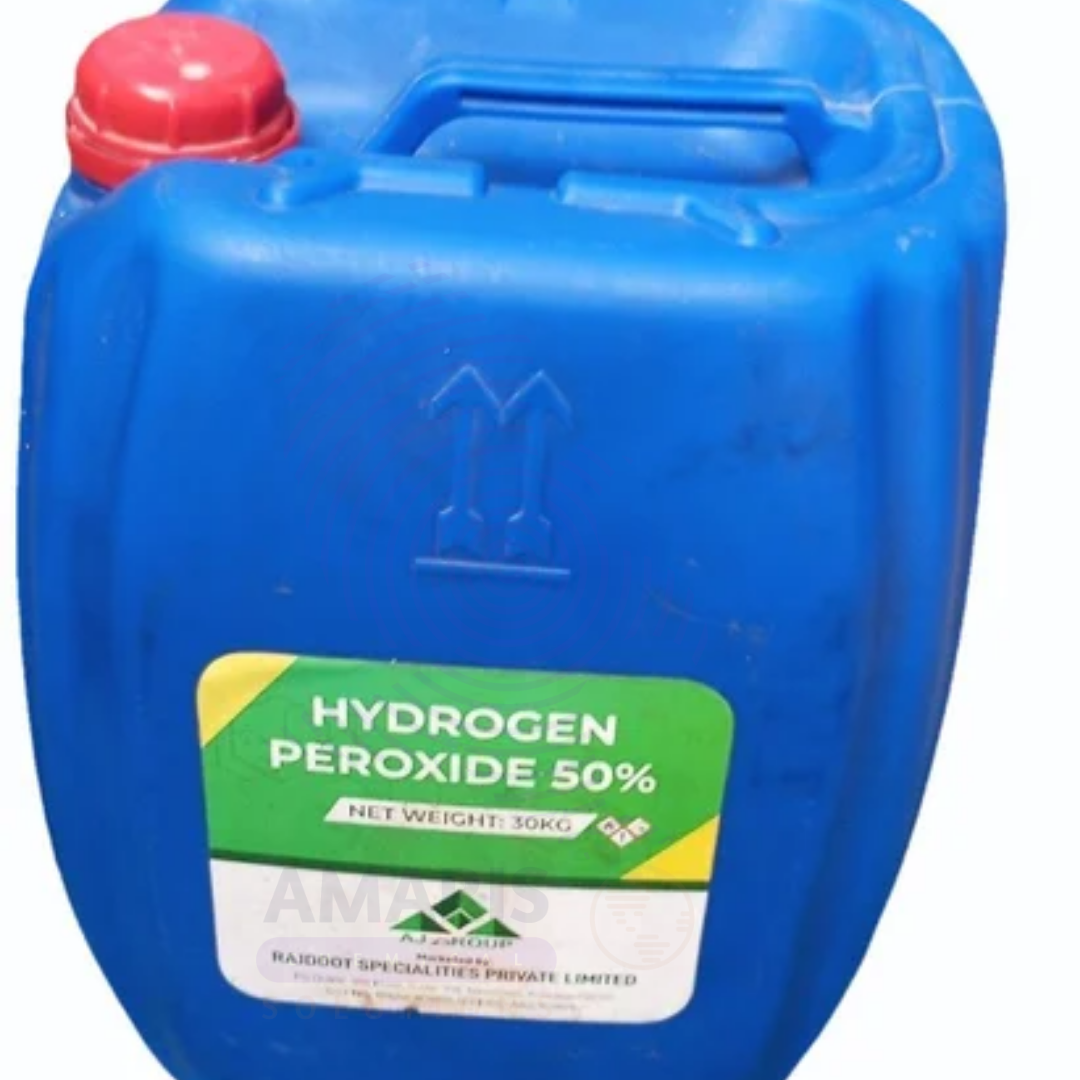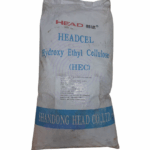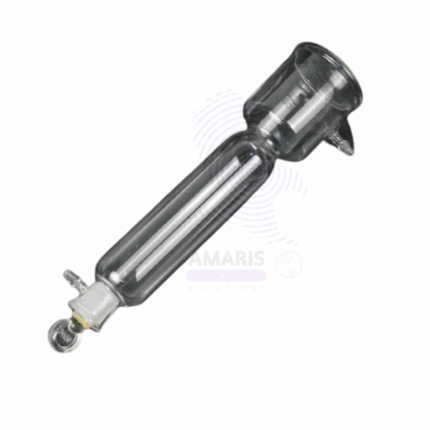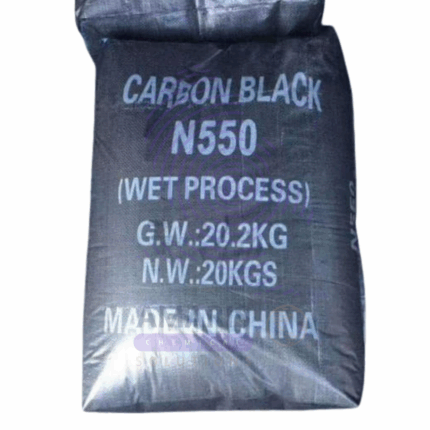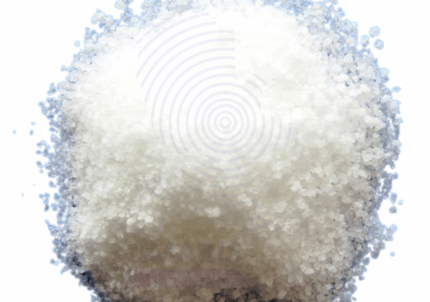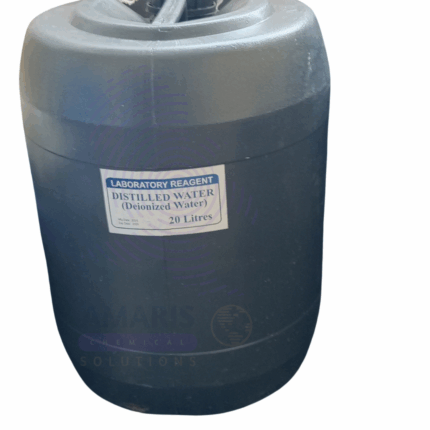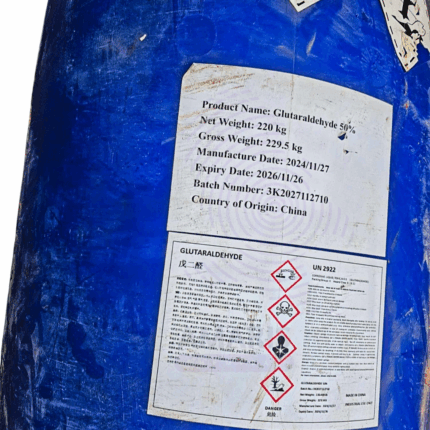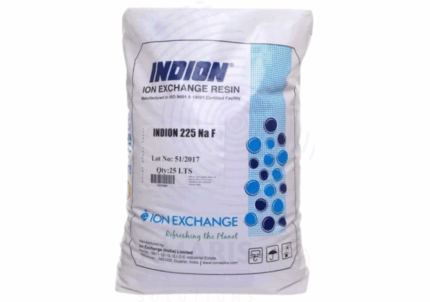Hydrogen Peroxide Tech Grade
$ 1.55 Original price was: $ 1.55.$ 1.44Current price is: $ 1.44.
Whatsapp Order
Hydrogen Peroxide Tech Grade is a highly concentrated aqueous solution of hydrogen peroxide (H₂O₂) designed primarily for industrial and technical applications. It is a clear, colorless liquid with a sharp, acrid odor. Known for its strong oxidizing, bleaching, and disinfecting properties, this tech-grade formulation is typically used where high reactivity is required, often in non-food processes. It decomposes into environmentally benign by-products—water and oxygen—making it a preferred agent for sustainable industrial processes.
Description
Table of Contents
Toggle
Hydrogen Peroxide Tech Grade
Primary Uses
- Industrial and Manufacturing
- Pulp and Paper Industry: Used extensively for bleaching wood pulp and paper fibers to achieve bright, white products without chlorine-based chemicals.
- Textile Industry: Employed as a bleaching and disinfecting agent for cotton, wool, and synthetic fibers to improve whiteness and fabric quality.
- Chemical Synthesis: Acts as a key oxidizing agent in the production of organic chemicals, epoxides, and peroxides; also used in the synthesis of various pharmaceuticals and intermediates.
- Water and Wastewater Treatment: Applied in industrial wastewater and process water treatment for oxidation of organic pollutants, disinfection, and odor control.
- Environmental Remediation: Used for in-situ chemical oxidation to break down soil and groundwater contaminants such as hydrocarbons and chlorinated solvents.
- Cleaning and Sanitizing
- Industrial Equipment Cleaning: Utilized in cleaning-in-place (CIP) systems to sanitize and remove organic residues in food processing, pharmaceutical, and beverage manufacturing plants.
- Surface Treatment: Used for sterilization and disinfection of surfaces, pipelines, and tanks in industrial facilities.
- Mining and Metallurgy
- Applied in ore processing and extraction to oxidize impurities and enhance metal recovery; also used in gold leaching processes.
Secondary Uses
- Electronics Industry
- Used for etching and cleaning silicon wafers and electronic components to remove organic and inorganic contaminants.
- Agriculture
- Occasionally used as a soil disinfectant and to control pathogens in hydroponic and greenhouse farming.
- Cosmetic and Pharmaceutical Raw Material
- Serves as a raw material or intermediate in the manufacture of cosmetic actives and disinfectants, though it must be purified and diluted for such uses.
- Research and Laboratory
- Employed in laboratories as a reagent for oxidation, sterilization, and analytical chemistry.
Additional information
| PACK SIZE |
30kg |
|---|
KEY PRODUCT FEATURES
1. Basic Identification Attributes
- Chemical Name (IUPAC): Hydrogen peroxide (aqueous solution)
- Common/Trade Name: Hydrogen Peroxide 50% Tech Grade
- CAS Number: 7722-84-1
- HS Code: 2847.00.00
- Molecular Formula: H₂O₂
- Synonyms: Peroxide, Hydrogen peroxide solution 50%, HP 50% Tech
2. Physical & Chemical Properties
- Physical State: Clear, colorless liquid
- Odor: Sharp, acrid
- Boiling Point: Approximately 118 °C (decomposes before boiling)
- Density: ~1.20 g/cm³ (50% concentration)
- Solubility: Completely miscible with water
- pH: Typically 3.5 or lower
- Stability: Unstable, decomposes releasing oxygen; stabilized with inhibitors
3. Safety & Hazard Attributes
- GHS Classification:
- Oxidizing liquid: Category 1
- Skin corrosion/irritation: Category 1B
- Serious eye damage/irritation: Category 1
- Toxicity: Corrosive; harmful if inhaled, ingested, or on skin contact
- Exposure Limits: OSHA PEL 1 ppm ceiling for vapor (varies by region)
4. Storage & Handling Attributes
- Container Type: HDPE drums, stainless steel containers specially designed for peroxide handling
- Storage Conditions: Store in a cool, dry, ventilated area, away from sunlight, heat sources, metals, organic materials, and reducing agents
- Shelf Life: Generally 6-12 months under optimal storage
- Handling Notes: Use appropriate PPE; avoid contamination and rapid decomposition
5. Regulatory & Compliance Attributes
- Compliant with industrial chemical regulations; not for food or pharmaceutical use without further purification
- Subject to hazardous material transport and handling regulations (DOT, ADR, IMDG)
6. Environmental & Health Impact
- Biodegradability: Breaks down readily into oxygen and water, environmentally benign at typical exposure
- Ecotoxicity: Low environmental toxicity at diluted concentrations; avoid direct release in high concentration
- Bioaccumulation: Not expected to bioaccumulate
- Carcinogenicity/Mutagenicity: Not classified
SAFETY HANDLING PRECAUTIONS
Safety Handling Precautions
- PPE Required: Acid-resistant gloves, goggles, face shield, protective apron, and respirator with acid gas filters
- Handling Guidelines: Use in well-ventilated areas; avoid inhalation and skin contact; prevent contamination and rapid decomposition
- Hygiene Practices: Wash hands after handling; prohibit eating, drinking, or smoking in work areas
First Aid Measures
- Inhalation: Move to fresh air; administer oxygen if needed; seek immediate medical attention if breathing difficulties occur
- Skin Contact: Rinse thoroughly with water for at least 15 minutes; remove contaminated clothing; seek medical care for burns or irritation
- Eye Contact: Flush with water for at least 15 minutes; urgent medical care required for burns or irritation
- Ingestion: Do NOT induce vomiting; rinse mouth and seek immediate medical attention
Firefighting Measures
- Fire Hazards: Supports combustion; can intensify fires; reacts violently with organic materials and metals
- Extinguishing Media: Use water spray or fog; avoid dry chemical extinguishers unless water unavailable
- Special Precautions: Firefighters must wear full protective clothing and self-contained breathing apparatus (SCBA)
- Decomposition Products: Oxygen and steam; may produce toxic gases under fire conditions
Related products
Absorption Tower
An Absorption Tower is a vertical vessel used in industrial processes to remove specific components from gas streams by contact with a liquid solvent. This equipment facilitates mass transfer between the gas and liquid phases, allowing targeted pollutants or valuable compounds to be absorbed efficiently. Absorption Towers are commonly employed in chemical plants, refineries, and environmental control systems for gas scrubbing, purification, and recovery applications. They are designed for optimal gas-liquid contact, often using packing materials or trays to enhance surface area and improve absorption efficiency.
Activated Carbon
Activated carbon is a highly porous, adsorptive material processed to have an exceptionally large surface area (typically 500-1500 m²/g) through thermal or chemical activation of carbon-rich source materials. This versatile adsorbent exists in powdered (PAC), granular (GAC), pelletized, and extruded forms, with pore structures specifically engineered for different applications ranging from water purification to gas treatment. Its extended surface area and complex pore network (micropores <2nm, mesopores 2-50nm, macropores >50nm) enable superior physical adsorption of contaminants through van der Waals forces, as well as chemical interactions with surface functional groups.
Ammonium Cupric Chloride
Ammonium Cupric Chloride is a blue-green crystalline inorganic compound composed of copper, ammonium, and chloride ions. It is widely used as a source of copper in agricultural fungicides and bactericides, as well as in electroplating, chemical synthesis, and textile dyeing. Its antimicrobial properties make it valuable for controlling fungal and bacterial infections in plants. Additionally, it serves as a precursor in various industrial and laboratory applications.
Distilled Water
Distilled Water is purified water that has been processed through distillation, a method involving evaporation and subsequent condensation to remove impurities, salts, minerals, and organic matter. This results in ultra-pure, clear, odorless, and tasteless water free of dissolved solids and contaminants. Distilled water is non-conductive, neutral in pH under ideal storage, and chemically stable. It is widely used across pharmaceutical, laboratory, medical, industrial, and consumer applications where high water purity is critical.
Glutardehyde
Glutardehydeis a potent biocidal agent and chemical sterilant widely used in healthcare, water treatment, and industrial applications. It is a colorless to pale yellow oily liquid with a pungent, sharp odor. Chemically, it is a dialdehyde, primarily valued for its ability to cross-link proteins, making it highly effective as a disinfectant, fixative, and preservative. Typically supplied in concentrations of 25% or 50% aqueous solutions, Glutaraldehyde is used where high-level disinfection is needed—especially against bacteria, viruses, fungi, and spores. Its versatility also extends to tanning, laboratory science, and wastewater treatment.
Indion Cation Resin
Indion Cation Resin is a synthetic ion exchange resin designed primarily for the removal of positively charged ions (cations) from water and various liquid streams. Typically composed of a sulfonated polystyrene-divinylbenzene (PS-DVB) copolymer, this resin features a highly porous bead structure with functional groups that exchange hydrogen or sodium ions for calcium, magnesium, iron, and other metallic cations. Available in different forms (strong acid cation, weak acid cation), Indion Cation Resin is widely used in water treatment, industrial processes, and purification systems.
Liquid Chlorine
Liquid Chlorine is a pale yellow-green, highly reactive chemical primarily composed of chlorine dissolved in water or as liquefied chlorine gas under pressure. It is widely used as a powerful disinfectant, bleaching agent, and oxidizer in water treatment, sanitation, and various industrial applications. Due to its strong antimicrobial properties, liquid chlorine effectively controls bacteria, viruses, algae, and other microorganisms, ensuring safe potable water and hygienic conditions.
Lysol (Cresol BP)
Lysol (Cresol BP) is a concentrated solution of cresol, a phenolic compound derived from coal tar or petroleum. It is a potent disinfectant and antiseptic with strong antimicrobial properties. This product typically contains 50% cresol in water or solvent and is used extensively in industrial, healthcare, agricultural, and household settings for its broad-spectrum efficacy against bacteria, fungi, and viruses. It appears as a colorless to pale yellow liquid with a characteristic phenolic odor and is highly effective for sterilization, deodorization, and sanitation.


 Preservatives(food)
Preservatives(food) Flavor Enhancers
Flavor Enhancers Acidulants
Acidulants Sweeteners
Sweeteners Antioxidants
Antioxidants Colorants(food)
Colorants(food) Nutraceutical Ingredients (food)
Nutraceutical Ingredients (food) Nutrient Supplements
Nutrient Supplements Emulsifiers
Emulsifiers
 Collectors
Collectors Dust Suppressants
Dust Suppressants Explosives and Blasting Agents
Explosives and Blasting Agents Flocculants and Coagulants
Flocculants and Coagulants Frothers
Frothers Leaching Agents
Leaching Agents pH Modifiers
pH Modifiers Precious Metal Extraction Agents
Precious Metal Extraction Agents
 Antioxidants(plastic)
Antioxidants(plastic) Colorants (Pigments, Dyes)
Colorants (Pigments, Dyes) Fillers and Reinforcements
Fillers and Reinforcements Flame Retardants
Flame Retardants Monomers
Monomers Plasticizers
Plasticizers Polymerization Initiators
Polymerization Initiators Stabilizers (UV, Heat)
Stabilizers (UV, Heat)
 Antifoaming Agents
Antifoaming Agents Chelating Agents
Chelating Agents Coagulants and Flocculants
Coagulants and Flocculants Corrosion Inhibitors
Corrosion Inhibitors Disinfectants and Biocides
Disinfectants and Biocides Oxidizing Agents
Oxidizing Agents pH Adjusters
pH Adjusters Scale Inhibitors( water)
Scale Inhibitors( water)
 Antioxidants(cosmetic)
Antioxidants(cosmetic) Emollients
Emollients Fragrances and Essential Oils
Fragrances and Essential Oils Humectants
Humectants Preservatives
Preservatives Surfactants(cosmetic)
Surfactants(cosmetic) Thickeners
Thickeners UV Filters
UV Filters
 Fertilizers
Fertilizers Soil Conditioners
Soil Conditioners Plant Growth Regulators
Plant Growth Regulators Animal Feed Additives
Animal Feed Additives Biostimulants
Biostimulants Pesticides (Herbicides, Insecticides, Fungicides)
Pesticides (Herbicides, Insecticides, Fungicides)
 Active Pharmaceutical Ingredients (APIs)
Active Pharmaceutical Ingredients (APIs) Excipients
Excipients Solvents(pharmaceutical)
Solvents(pharmaceutical) Antibiotics
Antibiotics Antiseptics and Disinfectants
Antiseptics and Disinfectants Vaccine Adjuvants
Vaccine Adjuvants Nutraceutical Ingredients (pharmaceutical)
Nutraceutical Ingredients (pharmaceutical) Analgesics & Antipyretics
Analgesics & Antipyretics
 Analytical Reagents
Analytical Reagents Solvents(lab)
Solvents(lab) Chromatography Chemicals
Chromatography Chemicals Spectroscopy Reagents
Spectroscopy Reagents microbiology-and-cell-culture-reagents
microbiology-and-cell-culture-reagents Molecular Biology Reagents
Molecular Biology Reagents Biochemical Reagents
Biochemical Reagents Inorganic and Organic Standards
Inorganic and Organic Standards Laboratory Safety Chemicals
Laboratory Safety Chemicals Specialty Laboratory Chemicals(Special Laboratory Equipment)
Specialty Laboratory Chemicals(Special Laboratory Equipment)
 Demulsifiers
Demulsifiers Hydraulic Fracturing Fluids
Hydraulic Fracturing Fluids Scale Inhibitors(oil)
Scale Inhibitors(oil) Surfactants(oil)
Surfactants(oil) Drilling Fluids
Drilling Fluids
 Dyes and Pigments
Dyes and Pigments Bleaching Agents
Bleaching Agents Softening Agents
Softening Agents Finishing Agents
Finishing Agents Antistatic Agents
Antistatic Agents
 Admixtures
Admixtures Waterproofing Agents
Waterproofing Agents Sealants and Adhesives
Sealants and Adhesives Curing Compounds
Curing Compounds Concrete Repair Chemicals
Concrete Repair Chemicals Anti-Corrosion Coatings
Anti-Corrosion Coatings
 Surfactants(cleaning)
Surfactants(cleaning) Builders
Builders Enzymes
Enzymes Solvents (Cleaning)
Solvents (Cleaning) Fragrances
Fragrances
 Electronic Chemicals
Electronic Chemicals Catalysts
Catalysts Lubricants
Lubricants Photographic Chemicals
Photographic Chemicals Refrigerants
Refrigerants Automotive chemicals
Automotive chemicals Pyrotechnic Chemicals
Pyrotechnic Chemicals
 Biodegradable Surfactants
Biodegradable Surfactants Bio-based Solvents
Bio-based Solvents Renewable Polymers
Renewable Polymers Carbon Capture Chemicals
Carbon Capture Chemicals Wastewater Treatment Chemicals
Wastewater Treatment Chemicals
 Pigments
Pigments Solvents(paint)
Solvents(paint) Specialty Coatings
Specialty Coatings Binders/Resins
Binders/Resins Additives
Additives Driers
Driers Anti-Corrosion Agents
Anti-Corrosion Agents Functional Coatings
Functional Coatings Application-Specific Coatings
Application-Specific Coatings
 Fresh Herbs
Fresh Herbs Ground Spices
Ground Spices Whole Spices
Whole Spices Spice Blends
Spice Blends Dried Herbs
Dried Herbs
 Leavening Agents
Leavening Agents Dough Conditioners
Dough Conditioners Flour Treatments
Flour Treatments Fat Replacers
Fat Replacers Decoratives
Decoratives Preservatives(baking)
Preservatives(baking)
 Plasticizers & Softeners
Plasticizers & Softeners Reinforcing Agents
Reinforcing Agents Adhesion Promoters
Adhesion Promoters Vulcanizing Agents
Vulcanizing Agents Antidegradants
Antidegradants Blowing Agents
Blowing Agents Fillers & Extenders
Fillers & Extenders Accelerators & Retarders
Accelerators & Retarders